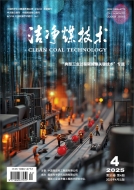Research and application progress on combustion-based carbon capturetechnologies in cement industry
 2025 No. 04
2025 No. 04
 129
129 42
42

Authors:
- WANG Junjie
- YANG Huawei
- ZHU Zhiping
- CAI Jun

Unit:
- State Key Laboratory of Coal Conversion,Institute of Engineering Thermophysics,Chinese Academy of Sciences
- Shanxi KeyLaboratory of Coal Flexible Combustion and Thermal Conversion
- Shanxi Engineering Research Center of Coal Clean,EfficientCombustion and Gasification
- University of Chinese Academy of Sciences

Abstract:
Cement industry is one of the largest contributors to greenhouse gas emissions accounting for about 7% of global CO2emissions. Carbon capture is considered a "fallback" technology,with combustion carbon capture offering several advantages such as strong capture capacity,low process energy consumption,and low costs. This article systematically reviews combustion carbon captureprojects in the cement industry both domestically and internationally,including four projects for direct separation,twelve projects foroxyfuel combustion,and four projects for calcium looping. Direct separation technology captures CO2 produced from the decompositionof limestone through indirect heat exchange. Internationally,the LEILAC project is a key example,with its core being a direct separationreactor. The first phase of the project is designed to capture 25 000 tons of CO2 per year,and the second phase aims to capture 100 000 tonsper year. Industrial trials of the first phase have shown that the separated CO2 purity is greater than 95%. Domestically,a company hasdeveloped an external combustion rotary kiln technology and is currently constructing a 50000 tons per year carbon capturedemonstration project. Oxyfuel combustion technology is divided into partial oxyfuel,first-generation full-sacale oxyfuel,and second-generation full-scale oxyfuel. Partial oxyfuel combustion achieves O2/CO2 combustion only in the calciner,capturing approximately 60%-75% of total carbon emissions. Due to the inhibition of raw material decomposition in the O2/CO2,industrial trial results indicate that thecalciner temperature needs to be increased by 60 to 70°C to achieve a higher decomposition rate. Two projects using partial oxyfuelcombustion technology have been constructed domestically. Full-system oxyfuel combustion technology creates the O2/CO2 atmosphereboth in the rotary kiln and calciner,with a CO2 capture capacity of 90%-95%. The first-generation full-scale oxyfuel combustiontechnology is based on flue gas recirculation to control flame temperature. Studies have shown that the O2/CO2 atmosphere has nosignificant impact on clinker quality,and parameter adjustments can achieve a similar temperature field in the rotary kiln with aircombustion. Compared to the first generation,the second-generation full-scale oxyfuel combustion technology eliminates the flue gasrecirculation system,with the rotary kiln temperature controlled by excess O2. Studies have shown that increasing the oxygen equivalenceratio provides an ideal temperature control effect,and several projects have been laid out. Several features,including CaCO3 and CaObeing the main components of the raw meal and clinker respectively,an existing calciner in the production process,give calcium loopingtechnology a natural advantage in the cement industry. This article focuses on the integrated calcium looping process layout and theindustrial trial results of the CLEANKER project,which showed a capture efficiency of 20%-80%. Within the carbonator temperaturerange of 450 to 750°C,the CO2 capture efficiency significantly increases with temperature,rising from 0% to a maximum of 100%. Acomparative analysis is conducted around carbon capture capacity,the scale of carbon capture projects,energy consumption andabatement costs,and technical risks. China's cement production accounts for about 45% of the global total. It is recommended tostrengthen the research and development of new technologies,accelerate the engineering verification of these technologies,and improverelated supporting facilities.

Keywords:
- cement
- CCS
- oxyfuel combustion
- direct separation
- calcium looping

Citation format:
王俊杰(1989—),男,河南林州人,工程师,硕士。E-mail:wangjunjie@iet.cn

Chart:
--

Articles:
--

Citation format:
WANG Junjie,YANG Huawei,ZHU Zhiping,et al. Research and application progress on combustion-based carboncapture technologies in cement industry[J].Clean Coal Technology,2025,31(4):37−51.

-
Executive director
China Coal Science and Industry Group Co., Ltd
-
Sponsored by
Coal Science Research Institute Co., Ltd
Coal Industry Clean Coal Engineering
Technology Research Center -
Editor in Chief
XIE Qiang
-
Vice Editor-in-Chief
YU Chang
SHI Yixiang
ZHAO Yongchun
DUAN Linbo
CAO Jingpei
ZENG Jie -
Publication Frequencies
Monthly
-
ISSN
1006-6772
-
CN
11-3676/TD
Covered by
- CSTPCD
- RCCSE(A+)
- AJ
- EBSCO host
- Ulrichsweb
- JST
- Scopus
Contact us
New Media
-
 Meichuanmei
Meichuanmei -
 Clean Coal Technology
Clean Coal Technology -
 Online Journals
Online Journals


 Submission system
Submission system Copyright agreement
Copyright agreement Instructions for authors
Instructions for authors